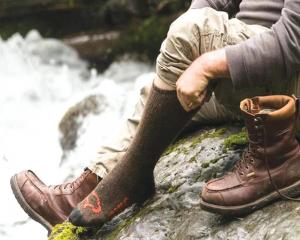2024 - Volume #48, Issue #1, Page #20
[ Sample Stories From This Issue | List of All Stories In This Issue | Print this story
| Read this issue]
Bison Wool Products To Keep You Warm
 |
That’s one of the reasons the fiber is so precious, says Ron Miskin, who owns The Buffalo Wool Co. with his wife Theresa. Because of its fineness and crimp, it has nearly 12 times more insulating value than sheep’s wool and is soft, lightweight, and tough.
“It’s less bulky, so there’s more dexterity wearing gloves to tie dogsled leads,” says Miskin, noting that Iditarod racers and oilfield workers in Alaska are among their customers.
The Miskins’ business began 14 years ago as part of the National Bison Association’s search for ways to use more parts of the bison. They discovered the demand for the hair when Miskin’s father put a listing on eBay for 4 lbs. of bison hair he collected off their Texas ranch’s fences. The unwashed hair sold for $320.
After much research, the Miskins developed a process that starts with shearing the hides of bison when they are processed for meat. A Michigan mill processes it to separate the fine down from the other types of hair. The fiber goes to a Wisconsin mill that spins it into five different base yarns before sending it to sock and hat knitters in Iowa and Texas. The Buffalo Wool Co. harvests the wool from many ranches instead of letting it be burned off in the tanning process or sent to landfills.
The fibers are then blended with other fibers, such as silk and Merino wool. The business offers several types of socks and hats for different uses. For example, the ProGear boot sock ($49) blends bison down, silk, and nylon with small percentages of Tencel, polyester, and Spandex to create a soft, warm, and wicking sock ideal for most outdoor winter activities. Lighter socks start at $27, and the warmest, American Field Kodiak Extreme Gear Boot Socks ($65), have 90 percent bison down and 10 percent nylon for superior warmth.
“The nylon is for the web to carry the down through the carding process and give it durability,” Miskin says.
In addition to warmth, the bison down is a good option for people allergic to sheep wool. The business also sells compression socks, a variety of hats, scarves, neck gaiters, and gloves. Some of the bison’s coarser hair is used for fly fishing tying kits and dog beds.
“Our mission is to use every part of the buffalo,” Miskin says, of the couple’s work with the NBA to continue to create products. In addition to clothing, entrepreneurs use hides for furniture and turn tallow into soap, for example.
Contact: FARM SHOW Followup, The Buffalo Wool Co., 201 Spring Creek Pkwy., Weatherford, Texas 76087 (ph 802-379-9665; sales@thebuffalowoolco.com; www.thebuffalowoolco.com).

Click here to download page story appeared in.

Click here to read entire issue
To read the rest of this story, download this issue below or click here to register with your account number.




